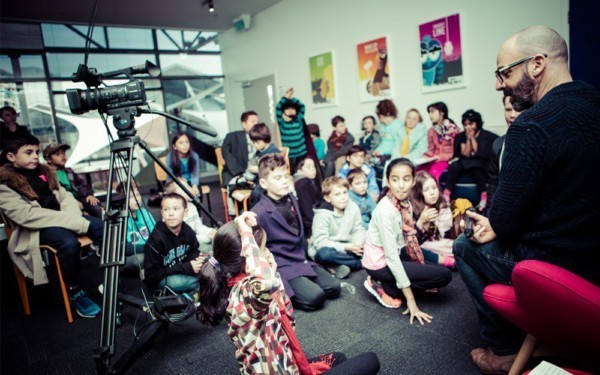This was presented by Peter Graham and Sam Phillips, Capital E’s digital tutors, at the uLearn conference in Hamilton, October 2017.
At Capital E we strongly believe in the power of the creative process. Being given the freedom to get involved in a messy and chaotic process allows students to think outside the box and explore their ideas to the full.

This is how the creative process looks to us. Perhaps this is what learning looks like all the time; there’s a lot of untangling of ideas, wandering around in the mess, having things not working out or failing… until they do start to work, and the idea straightens. Then the process continues, in a cycle, as the next piece of learning takes place.
One thing that can happen easily in teaching digital technologies is the idea that actually using tech in the classroom is the end in itself.
What we want to encourage is the use of tech as a means of getting the creative process going. This is how we approach the use of digital technologies in our studios, and how we would like to encourage the use of technology in classrooms across the country.
This concept embraces a number of the key competencies and soft skills, brought on by the squiggly mess of learning, and solving unstructured problems. This is the thinking key competency in action.
The Capital E team love this process, this is what we’re about – rolling up our sleeves and getting among the mess.
So what place do digital technologies have in this squiggly bit? How do you explore technologies in a context that is meaningful, inclusive and relevant to your students?
We have two digital suites at Capital E, MediaLab and the OnTV studios. Within these environments a great deal of learning happens, but students don’t recognise that they’re in an education space, instead they see a live news studio, or a game design studio. They see the green-screen and recognise the context immediately, and they see what happens in that environment as a project not a learning lesson. The same goes by presenting them with the context – they see the project, or the mission, not a lesson plan.
